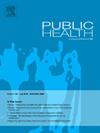Predicting global pneumonia mortality trends by age group: A modeling study
IF 3.9
3区 医学
Q1 PUBLIC, ENVIRONMENTAL & OCCUPATIONAL HEALTH
引用次数: 0
Abstract
Objectives
Pneumonia continues to be a major health issue worldwide, especially impacting those at risk across various age categories. This study aims to forecast pneumonia mortality trends by age group through 2030 using diverse modeling techniques to inform targeted public health interventions.
Study design
A predictive modeling study utilizing publicly available secondary data.
Methods
We employed five forecasting models—Auto-Regressive Integrated Moving Average (ARIMA), Generalized Additive Model (GAM), Simple Linear Regression (SLR), Facebook's Prophet model, and the n-sub-epidemic framework— to global, age-specific pneumonia mortality data from 2020 to 2030, based on data from 1990 to 2019. The percentage change in pneumonia deaths from 2020 to 2030 and forecasting uncertainty were assessed for all models.
Results
Our model-based projections suggest a sustained increase in global pneumonia mortality among individuals aged ≥70 years (6.0 %–35.4 %), a gradual increase in ages 50–69 (0.4 %–19.9 %), while children under 5 years of age (−33.2 % to −97.3 %) and 5–14 years (−22.7 % to −45.9 %) showed a decline by 2030. The n-sub-epidemic models predicted a decrease in mortality for ages 15–49 (−9.1 % to −11.6 %), contrasting with statistical models that showed increasing trends among ages 15–49 (0.1 %–11.6 %).
Conclusions
Pneumonia mortality trends are projected to vary considerably by age group, emphasizing the importance of age-specific policies. The use of multiple robust forecasting methods revealed consistent trends across most age groups and provided valuable insights into mortality dynamics. Future efforts should integrate region-specific data and retrospective model validation to improve predictive accuracy.
按年龄组预测全球肺炎死亡率趋势:一项模型研究
目的肺炎仍然是世界范围内的一个主要健康问题,特别是影响着各个年龄段的高危人群。本研究旨在利用多种建模技术预测到2030年各年龄组肺炎死亡率趋势,为有针对性的公共卫生干预提供信息。研究设计利用公开的二手数据进行预测建模研究。方法采用自回归综合移动平均(ARIMA)、广义加性模型(GAM)、简单线性回归(SLR)、Facebook的Prophet模型和n-亚流行病框架等5种预测模型,基于1990年至2019年的数据,对2020年至2030年全球年龄特异性肺炎死亡率数据进行预测。评估了2020年至2030年肺炎死亡的百分比变化和所有模型的预测不确定性。结果基于模型的预测显示,全球肺炎死亡率在≥70岁人群中持续增加(6.0% - 35.4%),50-69岁人群逐渐增加(0.4% - 19.9%),而5岁以下儿童(- 33.2%至- 97.3%)和5 - 14岁儿童(- 22.7%至- 45.9%)到2030年呈下降趋势。n个亚流行病模型预测15-49岁的死亡率下降(- 9.1%至- 11.6%),而统计模型显示15-49岁的死亡率呈上升趋势(0.1% - 11.6%)。结论肺炎死亡率趋势预计因年龄组而异,强调了针对年龄的政策的重要性。使用多种可靠的预测方法揭示了大多数年龄组的一致趋势,并为死亡率动态提供了有价值的见解。未来的工作应该整合特定区域的数据和回顾性模型验证,以提高预测的准确性。
本文章由计算机程序翻译,如有差异,请以英文原文为准。
求助全文
约1分钟内获得全文
求助全文
来源期刊

Public Health
医学-公共卫生、环境卫生与职业卫生
CiteScore
7.60
自引率
0.00%
发文量
280
审稿时长
37 days
期刊介绍:
Public Health is an international, multidisciplinary peer-reviewed journal. It publishes original papers, reviews and short reports on all aspects of the science, philosophy, and practice of public health.
 求助内容:
求助内容: 应助结果提醒方式:
应助结果提醒方式:


